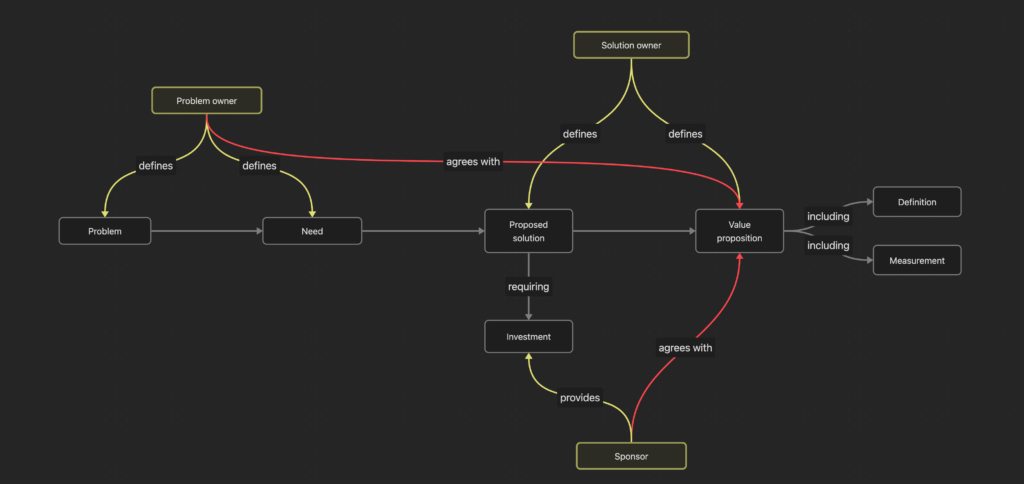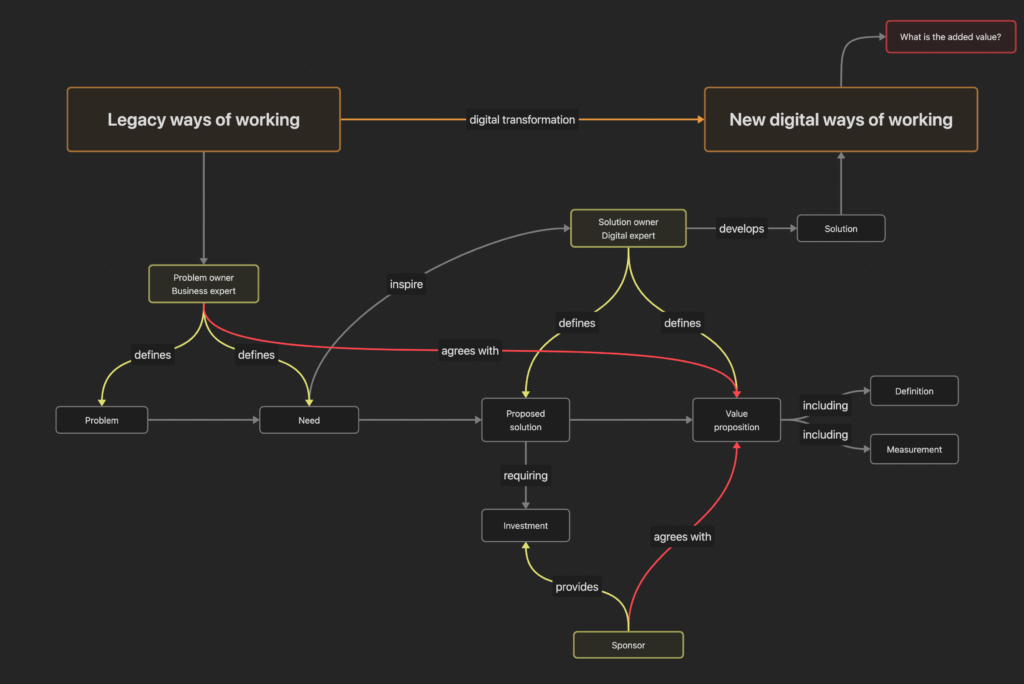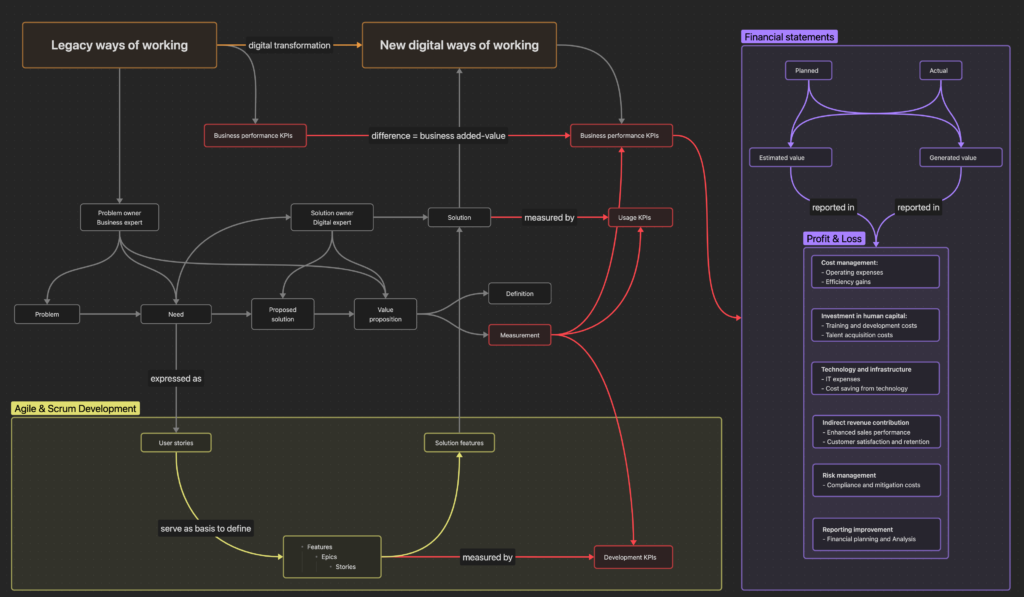Context
Is our work adding value? What is meant by “added value” and for whom?
As human beings, we all seek meaning: meaning of life, of things happening to us, of our job and what we deliver as part of it.
If we are not forced, we usually don’t engage in an endeavor if it does not make sense, if we did not answer the question “What is in it for me?”
Problem statement
In a professional context, we seek for a specific kind of meaning, of added value. How we we define it? How do we agree on it? How do we measure it?
For any endeavor, defining and estimating added value is key for individuals and organizations.
However, it seems that defining and estimating value in our VUCA* environment needs to be more straightforward and hence often overlooked.
How can we then make sense of what we do and justify it?
* Volatile, Uncertain, Complex and Ambiguous
Proposed solution
We describe here a method to collect, expose and collaboratively enrich elements of context that are prerequisites for value definition and estimation.
Knowledge graphs are ideal for exposing multiple facets of a reality perceived differently by everyone.
This approach can be applied to any project, any use case, program, or initiative claiming to add value.
The need to debate
When it comes to “added value”, there is no right or wrong or absolute definition.
It is a matter of finding a common agreement based on converging understandings and interests: the added value for whom, to gain what, considering what priority, what scope, what will take how long, taking what parameters into account, mitigating what risk…
For the different parties, it is all about integrating contextual information to get some level of common understanding and reach an agreement. This is achieved via discussions.
Common understandings
On one hand, Protagoras said that “man is the measure of all things“. It implies that whatever we perceive from the world is subjective: I, as a human being, perceive the world this way and estimate value this way.
On the other hand, our brain defines everything by “what it relates to and how it relates to” (Tim Berners-Lee). This is about the context, the objective contextualization of what we do.
We need to reconcile the subjective and objective aspects of value definition to enable constructive and concise discussions.
Professional context
Efficiency at work is based on people’s engagement, which in turn is based on motivation. A big part of the latter is the “why”: does it make sense?
When people collaborate, they need to find common ground on the “why”. They need a shared, methodical and digital approach to capture
- the definition of added value
- how we will measure added value
These are prerequisites to any project management framework to compare and prioritize projects based on their added value.
Transparency and agility
One key aspect is to transparently highlight potentially all subjective and objective elements that stakeholders consider relevant for value definition and measurement.
A value definition/measurement framework and resulting artifacts shall serve as a basis for discussion to answer the following questions and hopefully get to an agreement. The logic enabling parties to agree shall be transparently described.
- What is currently going wrong? What could we improve? What is blocking?
- Do we have a common understanding of what is blocking? Do we share the pain?
- Do we have a common understanding of what we need to improve the situation?
- Do we have a common understanding of what the benefits the solution will bring? What is in it for me, for you, for us?
Besides transparency, this framework shall also be flexible to dynamically add or remove elements and/or relationships between them. People’s minds and context change fast and the value definition and measurement framework must adapt to these changes to remain relevant.
Value chain
It starts with needs, requirements, pain points, and problem statements and ends with a solution supposed to solve the problem.

In a professional setup, money kicks in together with the notion of Return on Investment (RoI) a key metric stemming from value definition.

Usually two, often three parties need to agree on the definition and measurement of value.

In the context of digital transformation, new digital ways of working are supposed to add value as compared to legacy ways of working,

following modern application development frameworks (e.g. Agile philosophy and Scrum methodology)

generating value on official financial statements of an organization (e.g. Profit & Loss).

Scope
However, what is illustrated above is the core scope of context description only aiming at business value monitoring.
Describing broader business contextualization requires a methodical and digital approach to capture it systematically and consistently.
In a global economy, where everything is linked, it is key to capture context across different systems to understand inter-dependencies and perform meaningful impact analyses.

Ladies and Gentlemen
What you describe is worth a number of refelctions – thanks for sharing!
In the industry we serve, data-driven and AI is the key topic!
For us, data have content, created in context: When we look at the data lifecycle content is (normally) enhanced.
New approaches for long term programs call for measurements of such enhancements to justify ROI.
Interested to debate?